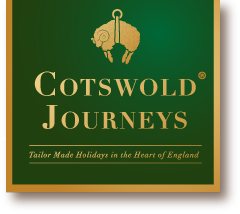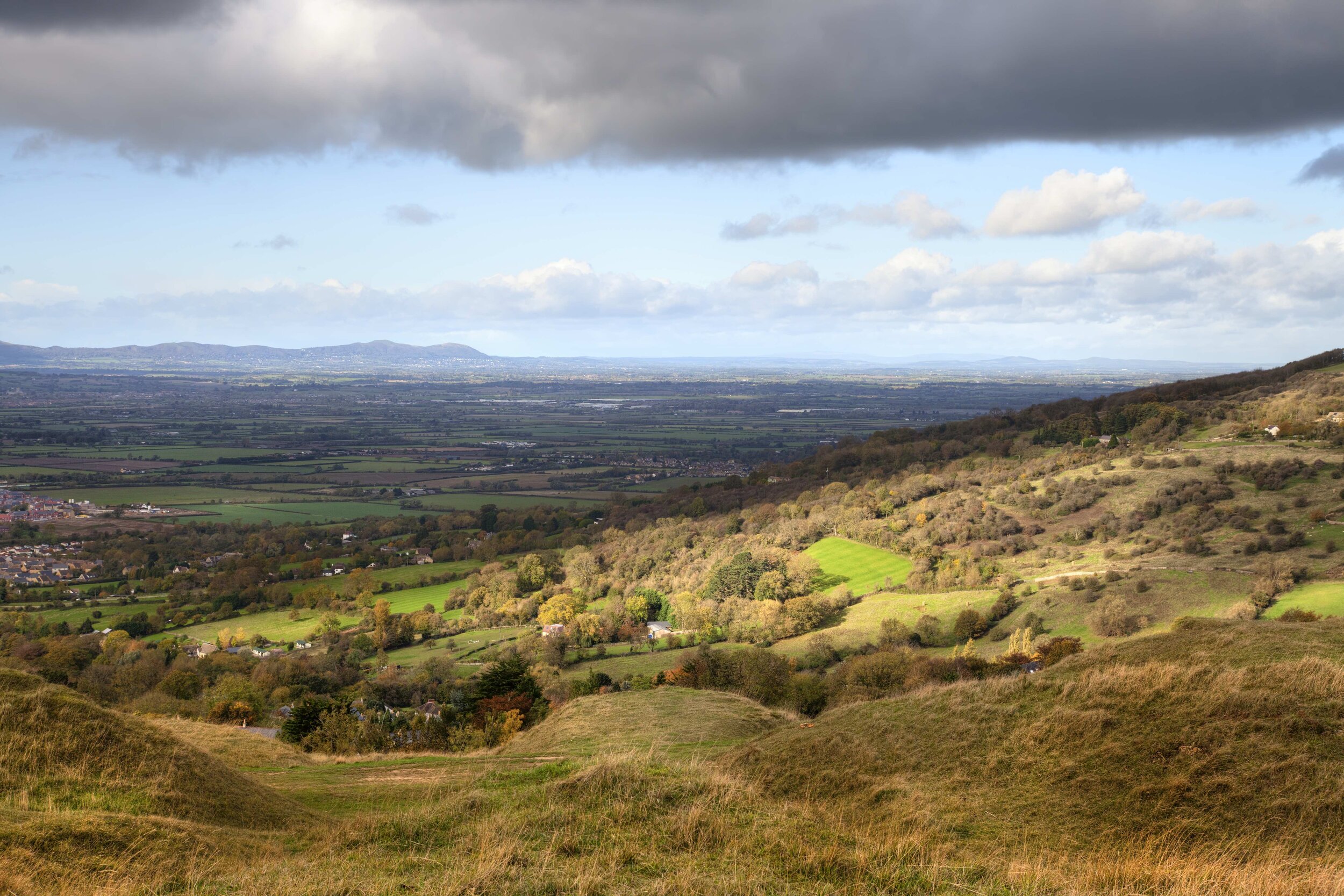Cleeve Common is a wide-open area of natural grassland forming part of the Cotswold Hills escarpment. Situated about 4 miles northeast of the town of Cheltenham, it is effectively the summit of Cleeve Hill, which, at 1083 ft/330 meters, is the highest point of the Cotswolds. The common is like a plateau – covering a wide area, it is a wonderful place for a windswept walk and some fine, wide-ranging views of up to 90 miles in clear weather. It is surprisingly wild – on a misty day you might imagine that you are on Dartmoor or the Yorkshire Moors, rather than the mild and gentle Cotswolds. Of national importance for the quality of its landscape, geology, archaeology, nature conservation, and scientific interest, it is the largest area of unimproved limestone grassland in Gloucestershire. Contrary to a widespread belief, commons do not belong to the public. Cleeve Common, for example, is privately owned by the descendants of the Lords of the Manor of Southam and Bishops Cleeve. Management of the Common is in the hands of the Board of Conservators, established by the Act of Parliament in 1890. What makes it ‘common’ is that grazing rights are granted to owners of farmland in local parishes. This entitles ‘commoners’ to seasonal grazing of sheep, cattle, and other animals between April and November.
The Common
Like most of Britain, Cleeve Common was once covered with woodland, which was cleared from around 6000 years ago to make way for farming. The landscape you see today is therefore ‘man-made’ grassland. Quarrying for stone, gravel, and sand in recent centuries has left striking but unnatural rock faces and disused workings, particularly along the west face of the Common. Cleeve is the only area of the Cotswolds where the full sequence of Inferior Oolite rocks can be seen. Two layers, the Philipsiama and the Bourguetia beds, are unique to Cleeve Hill and not visible anywhere else in Britain. The Common covers an area of 1000 acres (405 hectares). There are spectacular views westward across the Severn Vale to the Malvern Hills, the Forest of Dean, and beyond to the Black Mountains in South Wales and the hills of Shropshire. To the east stretch, the gently undulating slopes of the Cotswolds dipping towards the low vales of Oxfordshire. The dip slope at the back of the Common includes deep valleys such as Padcombe Bottom, often referred to as the ‘wilderness area’.
The practice of villagers grazing livestock on wasteland had been developed well before the Norman Conquest and by the 11th century, the pattern of grazing on the Common was well established. The Common was divided between the manorial estates of Southam and Bishops Cleeve and old boundary stones can still be seen today. Records from 1389 show that the hill was heavily stocked with over 5000 animals, including sheep, cattle, pigs, horses, and donkeys. This continued unchanged until Cheltenham became a fashionable spa resort in the 19th century, when Cleeve Common became attractive for recreation. Horse racing and training began in 1818 and the first golf course opened in 1891.
Agriculture and recreation are not easy bedfellows and so following a public parliamentary inquiry, the Board of Conservators came into being under the Commons Regulation (Cleeve) Provisional Order Confirmation Act of 1890. Over the centuries, over-grazing has sometimes been a problem. Today under-grazing is the biggest threat to the survival of this wildflower grassland, for without grazing, together with formal conservation measures, coarse grasses, gorse, and scrub would take over at the expense of the diverse flowers and other plants and animals that thrive here. Sheep are good for grazing over a wide area, especially the steeper slopes and shorter grass, whilst cattle tackle the taller and coarser grasses. Ideally, there would be some 2000 sheep and up to 100 cattle; in practice, a typical grazing season sees barely half these numbers.
Most of Cleeve Common consists of ‘unimproved limestone grassland’, found on shallow, free-draining, and alkaline soils. This grassland has not been treated with fertilizer or herbicides, or reseeded to yield more grass for agriculture. Unimproved limestone grassland is an important wildlife habitat because it is rich in plants and invertebrates, which in turn provide food for birds and mammals. Several types of grass can be found, including short turf of fescues and bents and taller tor-grass, upright brome, and meadow oat-grass. In spring and summer, lime-loving flowers are widespread, including bright yellow bird’s foot trefoil, burnet-saxifrage, small scabious, horseshoe vetch, carline thistles, and harebells. Orchids, too, abound – bee orchid, spotted orchid, pyramid orchid, and the rarer musk orchid.
There are several points of interest to search out. The dew pond is a historic watering hole near the highest part of the common, opposite the radio masts. It was restored in 2000 as an experiment in a traditional way of providing drinking water for grazing stock. Twenty meters across and two meters deep (although the maximum water depth is only about one meter), it collects rainwater and run-off from the surrounding land. Traditionally a lining of clay prevented the water from soaking away, but today a butyl sheet liner is used instead.
On the other, northern, side of the common – the wilder part, in the vicinity of Postlip Hall, with its catholic chapel and tithe barn – is the washpool. Built in 1897, it is a deep, keyhole-shaped trough with stone sides. Sheep were herded a few at a time into the round well and, once thoroughly soaked, allowed to scramble out up the narrow ramp. The wash pool was fed with water from the pond immediately above it, formed by damming the stream that flows down from a spring about 200 meters further up the valley.
Just above Nutterswood, on the flanks of the western side of the common, are earlier remains. An Iron Age hillfort, one of over thirty hillforts built along the entire Cotswold escarpment, dating from about 500 BC and covering about three acres, was built initially as a single bank and ditch and developed into a double bank and ditch two centuries later. Further north, above Rising Sun Lane, is the Ring, a circular earthwork on the upper part of the scarp slope, fifty meters in diameter, thought to have been an animal enclosure in the Romano-British period (the early centuries AD). Near to that is the Cross Dyke, probably the oldest archaeological feature of the common, a long ditch and bank earthwork. It runs diagonally up the escarpment (where it is popularly called ‘The Staircase’), over the edge and then swings left into Dry Bottom and Postlip Quarries. It is thought to date from the Bronze Age (before 700 BC) and was built as a territorial boundary. Many centuries later, it became the manorial boundary between Southam and Cleeve.


0 Comments